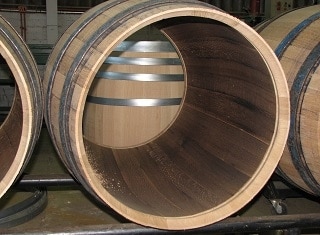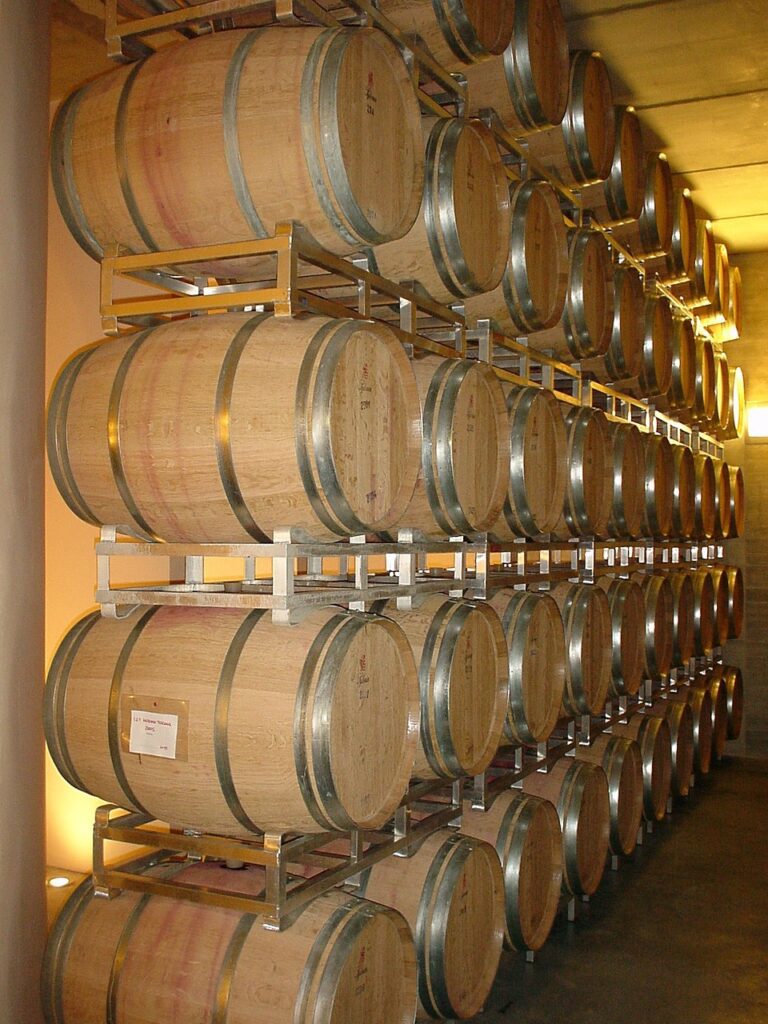The maturation of wine in oak barrels has an influence on the colour, flavour and taste of wine. Although the aim of wood maturation is the improvement of wine, it can also have detrimental effects. Bitterness is one of these.
Coumarin is a bitter compound, which occurs in oak wood and can transfer the bitterness into the wine if it is matured in oak. Individually the concentration of the compounds is too low to be observed, but together their concentration is high enough to be observed. It is well-known that tannins can cause bitterness, but cooperages must also attend to the influence of coumarin compounds. Coumarins also occur in medicine for blood clots, cancer tumours and gallstones. Coumarin is a chemical compound, which is formulated as C9H6O2. It occurs especially in sweet smelling plants to protect them against pathogens. Coumarin smells sweet, but tastes bitter. Apart from coumarin as such, derivatives thereof, namely esculetin, umbelliferone, scopoletin, 4-methylumbelliferone and fraxetin, also occur in different plants. All six compounds were identified in commercial wine and spirits samples, but they occur in higher concentrations in red wine. Although the compounds smell sweet, they do not contribute to the sweet taste of matured spirits or wine. Research regarding the compounds is supported by cooperages like Sequin Moreau and Demptos. The natural drying of wood, before the assembly of barrels is a key factor in the coumarin concentration of wood-matured spirits and wine. The air drying of wood is not only a drying process, but also a maturation process. It is caused by the growing of certain micro-organisms, forming extracellular enzymes. These enzymes contribute to the hydrolysis of coumarin compounds. The natural air drying of wood in certain regions, with an annual rainfall of 800 to 1 000 mm and moderate temperatures are consequently preferred. The toasting of wood also decreases the concentration of coumarin compounds in wood. Demptos already makes barrels, which are based on the chemical composition of the wood. One such Demptos barrel, with a high isoprenoid concentration, ought to impart more fruity character to wine. Another barrel of this cooperage is selected on the basis of the lignin concentration of the wood. Lignin is resistant to alcohol and such barrels will consequently produce less wood character during wood maturation. Another important cooperage, which produces World Cooperage barrels, also classifies their barrels rather on its aromatic characteristics than the wood origin. Different opinions however exist about the impact of coumarin compounds on potential bitterness, especially when the bitterness of tannins is known. The latter can however be decreased over time. A trend also exists that light roasting over a long period is preferred. This causes that wine flavours are not overawed by the toasting flavours. Medium and heavy toasting also have a huge influence on the aroma profile and some of these flavours can be interpreted as bitterness. The use of bigger barrels, causing less wood influence is also an existing trend. Winemakers do however doubt whether they can include the coumarin concentration of barrels as a specification requirement, seeing that advanced analysis technology is required for it. They believe that cooperages should rather utilise it in their product development. Everybody does however believe that bitterness as such is undesirable and tannins can contribute to it. There must be differentiated between bitter and astringent tannins, seeing that astringent tannins are softer than bitter tannins. The potential bitterness of wine can already be limited in the vineyard. Grapes with green seeds will lead to bitterness in the resulting wine. Seed contact must consequently be prevented or the grapes must be harvested at a higher ripeness degree. The wine balance does however determine its acceptability (Gray, 2020).

Wood toasting has an influence on the bitterness of wood.
Reference
Gray, B., 2020. New research finds oak compounds that can make wine tasting bitter. Wine Business Monthly, October 2020: 40 – 43.













